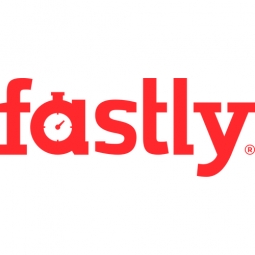Technology Category
- Cybersecurity & Privacy - Application Security
Applicable Industries
- Buildings
- Equipment & Machinery
Use Cases
- Traffic Monitoring
- Transportation Simulation
About The Customer
BloomNation is an online retailer that delivers fresh flowers directly from local florists. The company was founded in 2011 and serves customers in 5,000 cities and towns across the United States. In 2019, BloomNation was listed on Built In LA’s 50 Best Small Places to Work list, which significantly boosted their national profile. However, this recognition also attracted a flood of abusive traffic to their website, causing significant operational and customer experience challenges. The company needed a solution that could effectively repel these attacks and provide their engineering team with the ability to quickly identify and manage traffic signals.
The Challenge
BloomNation, an online flower retailer, faced a significant challenge in late 2019 when it was listed on Built In LA’s 50 Best Small Places to Work list. This recognition boosted their national profile but also attracted malicious actors to their website on a larger scale. The company was inundated with abusive attack traffic, including DDOS, SQLi, XSS, and credential stuffing, as malicious actors attempted to scan their web applications. This situation had a significant impact on the organization. Engineers had to divert their attention from building and deploying product features to manually researching and blocking IP addresses to keep the website operational. The surge in traffic also negatively affected the customer experience, with page load times slowing and the site breaking as attack requests increasingly hit their server instances. BloomNation needed a solution that could not only repel these attacks but also provide their engineering team with the ability to rate limit traffic to quickly tag and identify traffic signals based on custom criteria.
The Solution
BloomNation turned to Fastly's rate limiting features to address their challenge. Fastly's solution allowed BloomNation to easily identify malicious traffic and prevent it from reaching their servers, thereby reducing resource utilization and improving the customer experience. At the height of the attacks, BloomNation had been dedicating three engineers to triage web attacks a few days a week. However, Fastly's tagging and filter features enabled BloomNation to categorize traffic through custom signals, freeing them from manual operations related to identifying abusive web requests. While BloomNation had been able to block IPs from further attacking their applications, the initial requests were still hitting their servers, causing considerable strain on their load balancers, which saw up to 90% CPU consumption. Fastly's rate limiting was able to stop these requests, speed up page load times, and prevent sites from being unavailable for legitimate users. Fastly's tools and features also allowed BloomNation to plan out best practices as the company grows and provided a forward-looking approach to application security.
Operational Impact
Quantitative Benefit

Case Study missing?
Start adding your own!
Register with your work email and create a new case study profile for your business.
Related Case Studies.

Case Study
Smart Water Filtration Systems
Before working with Ayla Networks, Ozner was already using cloud connectivity to identify and solve water-filtration system malfunctions as well as to monitor filter cartridges for replacements.But, in June 2015, Ozner executives talked with Ayla about how the company might further improve its water systems with IoT technology. They liked what they heard from Ayla, but the executives needed to be sure that Ayla’s Agile IoT Platform provided the security and reliability Ozner required.

Case Study
IoT enabled Fleet Management with MindSphere
In view of growing competition, Gämmerler had a strong need to remain competitive via process optimization, reliability and gentle handling of printed products, even at highest press speeds. In addition, a digitalization initiative also included developing a key differentiation via data-driven services offers.

Case Study
Predictive Maintenance for Industrial Chillers
For global leaders in the industrial chiller manufacturing, reliability of the entire production process is of the utmost importance. Chillers are refrigeration systems that produce ice water to provide cooling for a process or industrial application. One of those leaders sought a way to respond to asset performance issues, even before they occur. The intelligence to guarantee maximum reliability of cooling devices is embedded (pre-alarming). A pre-alarming phase means that the cooling device still works, but symptoms may appear, telling manufacturers that a failure is likely to occur in the near future. Chillers who are not internet connected at that moment, provide little insight in this pre-alarming phase.

Case Study
Premium Appliance Producer Innovates with Internet of Everything
Sub-Zero faced the largest product launch in the company’s history:It wanted to launch 60 new products as scheduled while simultaneously opening a new “greenfield” production facility, yet still adhering to stringent quality requirements and manage issues from new supply-chain partners. A the same time, it wanted to increase staff productivity time and collaboration while reducing travel and costs.

Case Study
Energy Saving & Power Monitoring System
Recently a university in Taiwan was experiencing dramatic power usage increases due to its growing number of campus buildings and students. Aiming to analyze their power consumption and increase their power efficiency across 52 buildings, the university wanted to build a power management system utilizing web-based hardware and software. With these goals in mind, they contacted Advantech to help them develop their system and provide them with the means to save energy in the years to come.

Case Study
Integration of PLC with IoT for Bosch Rexroth
The application arises from the need to monitor and anticipate the problems of one or more machines managed by a PLC. These problems, often resulting from the accumulation over time of small discrepancies, require, when they occur, ex post technical operations maintenance.



